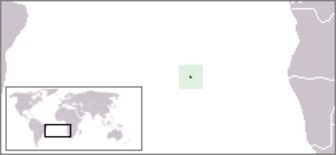Atlantisia podarces
When American ornithologist Alexander Wetmore described this species from subfossil remains which were found at Prosperous Bay, Saint Helena, he classified it into the new genus Aphanocrex. However, in 1973 American paleontologist Storrs Olson synonymised this genus with the genus Atlantisia which other representative is the Inaccessible Island Rail . While Olson had considered it as congenor of the Inaccessible Island Rail, other scientists regarded it not even as close relative and so it was renamed into Aphanocrex. The Saint Helena Swamphen was relatively large and reached almost the size of the New Zealand Weka . In contrast to the Weka it was more slender. Since Saint Helena was predator free until the sixteenth century, the swamphen had lost its ability to fly but it wings were better developed like the wings of the rails from Inaccessible Island and Ascension Island. Furthermore it had strong toes with long claws which give that species a good ability to climb and flutter up the steep valley walls. It

The Atlantisia podarces is classified as Extinct (EX), there is no reasonable doubt that the last individual has died.
Atlantisia podarcesPodarces had a news item on Live Search NewsPodarces .Podarces had a news item on Live Search NewsPodarces - Wikipedia, la enciclopedia libre Websites About Podarces - * Wikipedia The definitive Wikipedia entry for Podarces. Wikipedia is the biggest multilingual free-content encyclopedia on the Internet. More
Summary Atlantisia podarces was described from fossils by Wetmore as a St Helena (to UK) endemic genus, Aphanocrex2, but re-assigned to Atlantisia by Olson1. It presumably became extinct soon after the discovery of the island in 15021. Ecology: Nothing is known. Threats It was large and flightless, and therefore probably hunted to extinction by humans and introduced predators. References 1. Olson (1973). 2. Wetmore (1963). More
Family : Rallidae
Genus : Atlantisia
Species : podarces
Authority : (Wetmore, 1963)

